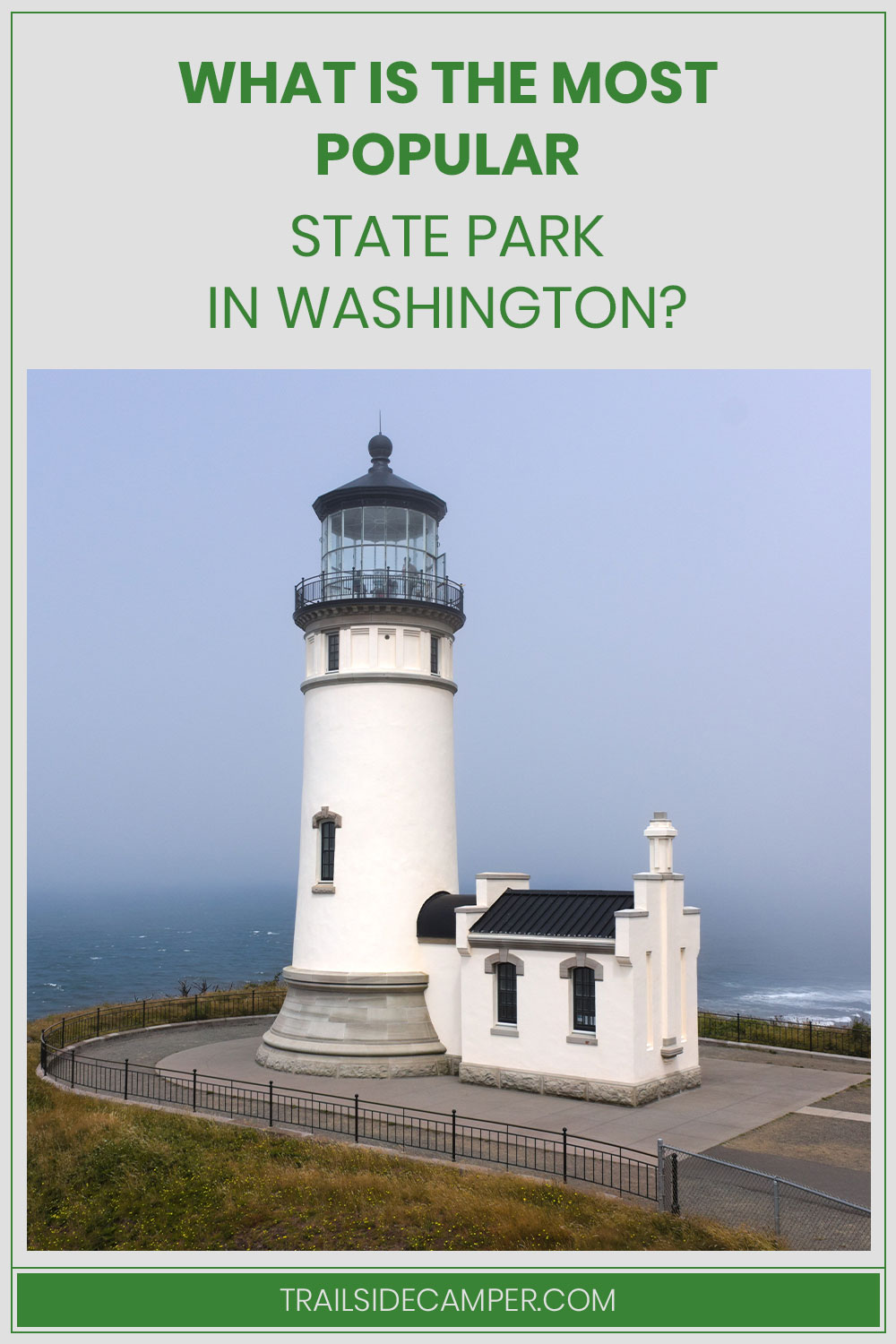Washington State boasts 124 state parks and three national parks. Poll anyone in the state, and you’ll probably get a mixed batch of answers. All the parks are just too amazing.
However, there is one that owns the title of the most visited state park in Washington State Deception Pass. This sprawling and diverse state park boasts a whopping 2-3 million visitors a year.
My personal preference would be Cape Disappointment State Park in Ilwaco, Washington. As a child, my parents took me to the park’s beaches.
We’d build driftwood forts and run along the water’s edge through the mist. You really can’t go wrong anywhere in the Pacific Northwest.
Are You Allowed to Camp Anywhere?
You are not allowed to camp anywhere in Washington State Parks. There are designated camping locations throughout the parks system. Reservations need to be made for any camping space.
The process is simple enough. To book a campsite visit the Washington State Parks website and follow their directions for reserving the site. There are four zones to choose from.
Within each zone, you will see the availability of campsites for the timeframe in which you wish to camp. The map is extremely user-friendly and interactive. All in all, it seems like a very straightforward process.
What Spots Are Most Popular?
One of the most popular camping spots in Washington State goes hand in hand with the most popular State Park in Washington. Deception Pass has over 300 campsites available as well.
One of the most popular campgrounds in Deception Pass is the Cranberry Lake Campground; it also happens to be the largest in the park as well. Deception Pass campgrounds open for reservations up to six months in advance and fill extremely quickly.
The campground is in a central location with easy access to all kinds of recreation activities and beach access as well. With all that being said, one needs to consider the vast spectrum of camping options in Washington State.
For example, if one doesn’t like to camp in a rainforest or doesn’t like the damp, the state also has a high desert with dryer, more arid options. The options are endless.
When is The Best Time to Camp There?
The best time to camp at Cranberry Lake Campground would be during moderate seasons. Summer may be too hot for some; winter will limit your access to water. Weekends and holidays, of course, would be popular times to camp.
However, with popularity does come crowding. If you are solo campers or campers with no kids, you may want to consider camping during the week if possible and avoid camping during summer or spring vacations for schools.
However, holidays and weekends may be your only or best options if you have school-aged children. In this case, I suggest reserving your site as early as possible to ensure you have a spot saved.
Also, it may be beneficial to camp during the week. Personal preference plays a huge factor in deciding the best time to camp at Cranberry Lake and any campground you choose to frequent.
What Spots are Good if You Want to Avoid The Crowd?
When most people think of Washington State, they think of Seattle, rain, and mountains. Those interested in camping in Washington State may migrate towards those locations more.
But did you know that Washington State also has a high desert landscape? These areas are a bit more harsh climate-wise but just as beautiful as the East side locations as well.
Palouse Falls may be a good option to avoid crowds. However, many of the state parks have the land for campers and other park visitors to spread out. So even if you are camping with many neighbors, you can venture out and feel somewhat secluded.
Are There Any Spots Inside the Parks You Need to Avoid?
Any spot listed as “restricted” by the Park Rangers is definitely a spot you should not venture to and must avoid. Always know before you go, check for restricted or closed areas.
If you do not feel comfortable around alcohol, it may be beneficial to avoid those campsites that allow alcohol. The west side of the Cascade Mountains does see significantly higher rainfall, so avoid low-lying campsites.
Even in the state parks with higher elevations, camping near river basins would also be something to avoid. Flooding is a very real possibility. Finally, don’t go off the trail when hiking.
Not only can you damage the ecosystem you may be subject to unwanted interactions with the wildlife.
Final Thoughts
All in all, camping in Washington State Parks is a wonderful experience, no matter your preference. There are so many options and unique recreational opportunities. No one in your camping group will run out of things to do.
I’ll end on this note, and I cannot reiterate enough, “know before you go!” Make reservations early and plan ahead. Happy Camping!

